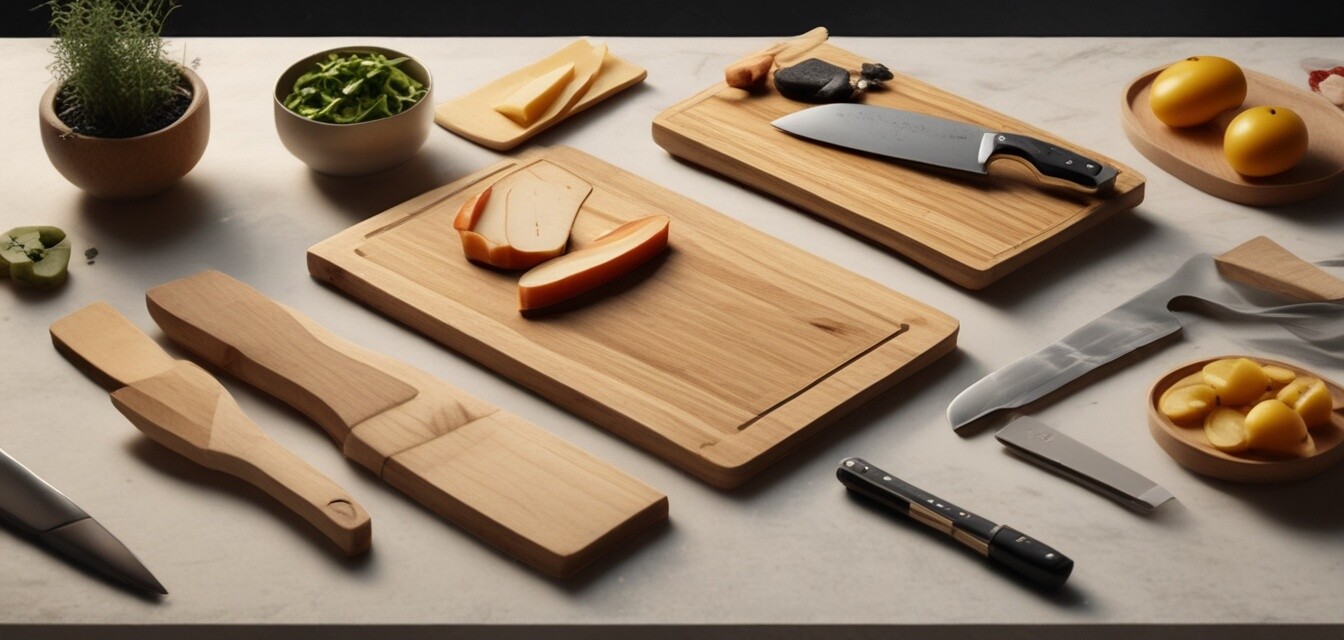
How to Choose the Right Cutting Board for Your Kitchen
Key Takeaways
- Consider material types and their suitability for different food prep tasks.
- Evaluate size and thickness based on your cooking style and kitchen space.
- Maintain and care for your cutting board to ensure longevity.
- Explore different cutting boards based on aesthetics and functionality.
- Look for non-slip features to enhance safety while chopping.
Choosing the right cutting board is essential for any kitchen enthusiast. It plays a crucial role in food preparation, influencing not only the efficiency but also the safety of your cooking environment. With various materials and designs available, determining the best cutting board for your needs can make a significant difference. This guide will provide you with valuable insights to select the perfect cutting board tailored to your culinary requirements.
Understanding Cutting Board Materials
The material of a cutting board significantly impacts its functionality. Below is a comparison of the most common materials used for cutting boards.
| Material | Pros | Cons | Best For |
|---|---|---|---|
| Wood | Durable, gentle on knives, aesthetically pleasing | Requires maintenance, can harbor bacteria if not cared for | Cutting meat, vegetables, bread |
| Plastic | Lightweight, dishwasher safe, non-porous | May dull knives faster, can retain odors | Raw meat, fish, easy clean-up |
| Bamboo | Eco-friendly, lightweight, durable | Can crack if not maintained, less knife-friendly than wood | General food prep, environmentally conscious cooks |
| Glass | Non-porous, easy to clean, very hygienic | Hard on knives, can break or chip | Cheese, pastries, when aesthetics matter |
Choosing the Right Size and Thickness
The size of your cutting board can affect your cooking experience. Here are some guidelines to help you choose the right size and thickness:
- Small boards: Good for quick tasks and easy storage.
- Medium boards: Versatile for most kitchen tasks; suitable for small kitchens.
- Large boards: Ideal for meal prep and entertaining but require more storage space.
As for thickness, consider the following:
- Thin boards: Easier to handle, but less durable.
- Thick boards: More durable and stable, but heavier and bulkier to clean.
Maintaining Your Cutting Board
To extend the life of your cutting board, regular maintenance is key. Here are essential care tips:
- Wash with soap and warm water; avoid soaking.
- For wooden boards, apply food-safe mineral oil regularly for protection.
- Disinfect with vinegar or a mixture of water and bleach for plastic boards.
- Store in a dry place to prevent warping or bacterial growth.
Cutting Boards Based on Aesthetics and Functionality
Cutting boards can be both functional and stylish. Here are aspects to consider:
- Color: Choose colors that match your kitchen theme.
- Design: Grooved boards are great for catching juices, while flat boards are ideal for chopping.
- Dual-purpose: Some cutting boards also act as serving trays.
Safety First: Non-slip Features
Safety should always be a priority in the kitchen. Look for cutting boards with:
- Rubberized edges to prevent slipping.
- Weighted designs for stability during use.
For more practical advice on kitchen products, consider visiting our Kitchen Gadgets & Tools category, where you'll find items that can enhance your cooking experience.
Conclusion
Choosing the right cutting board is a matter of understanding your cooking style, preferences, and the types of food you prepare. By considering the materials, size, maintenance requirements, aesthetics, and safety features outlined in this guide, you can make an informed decision. A well-chosen cutting board not only improves your kitchen efficiency but elevates the overall cooking experience.
Pros
- Enhances food preparation efficiency.
- Protects kitchen surfaces with styles and materials.
- Can be aesthetically pleasing as part of kitchen decor.
Cons
- Can be an investment upfront depending on material.
- Needs maintenance and cleaning upkeep.
- Some materials may not be compatible with all food types.
To further improve your kitchen skills, check out our Tips and How-To's section that offers step-by-step guides and valuable advice.